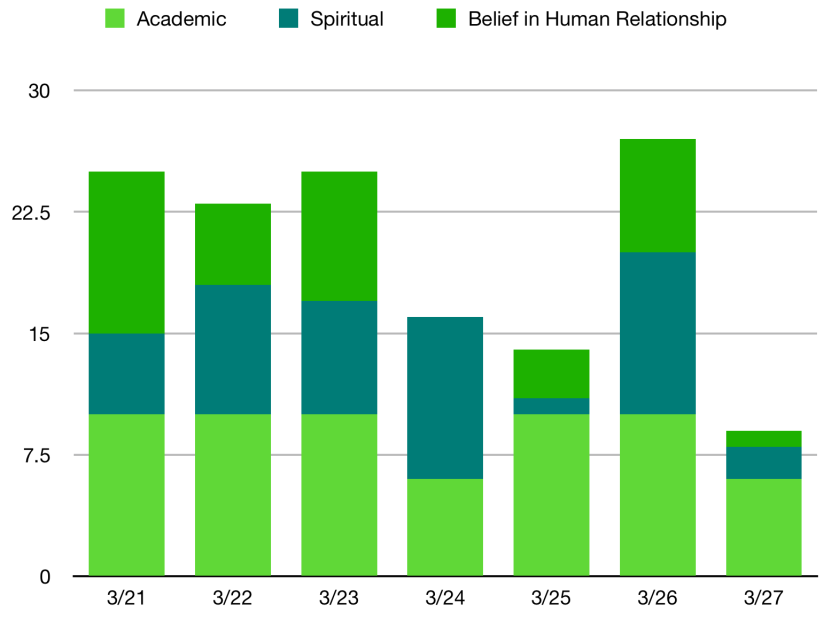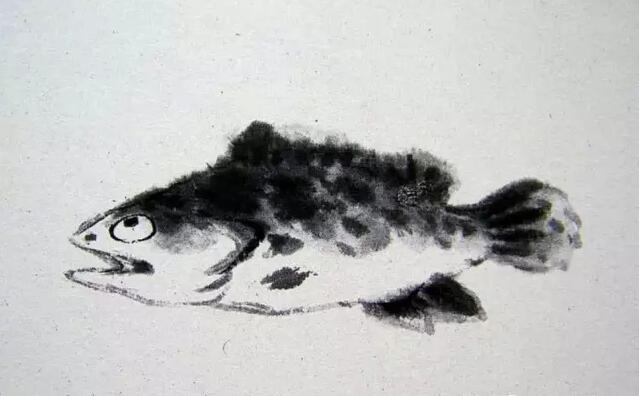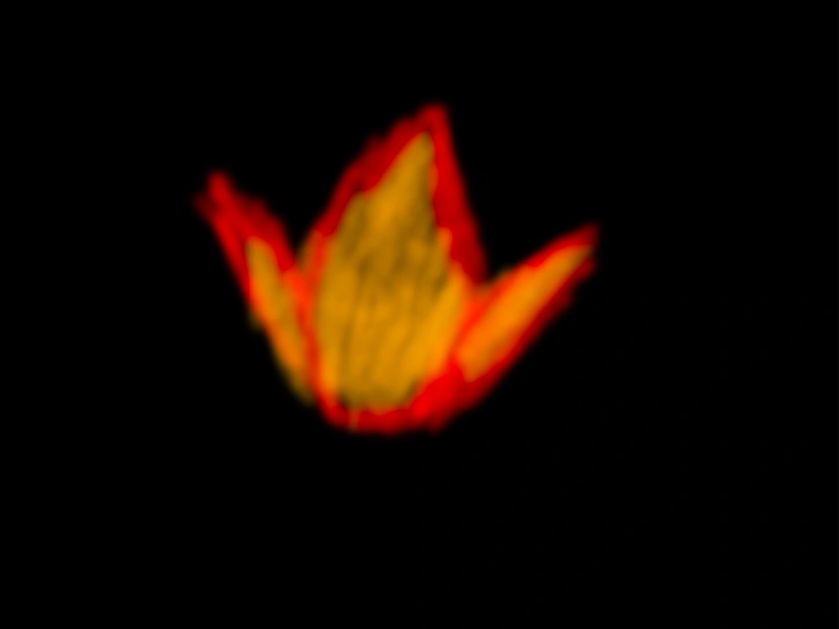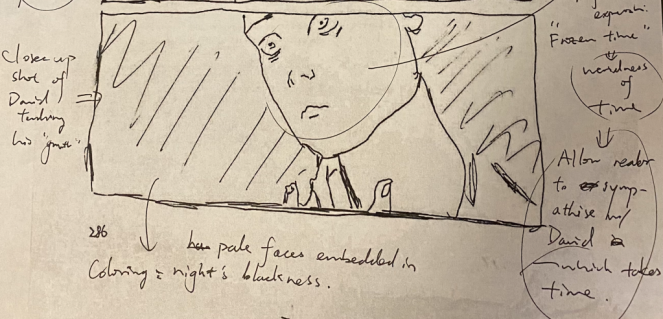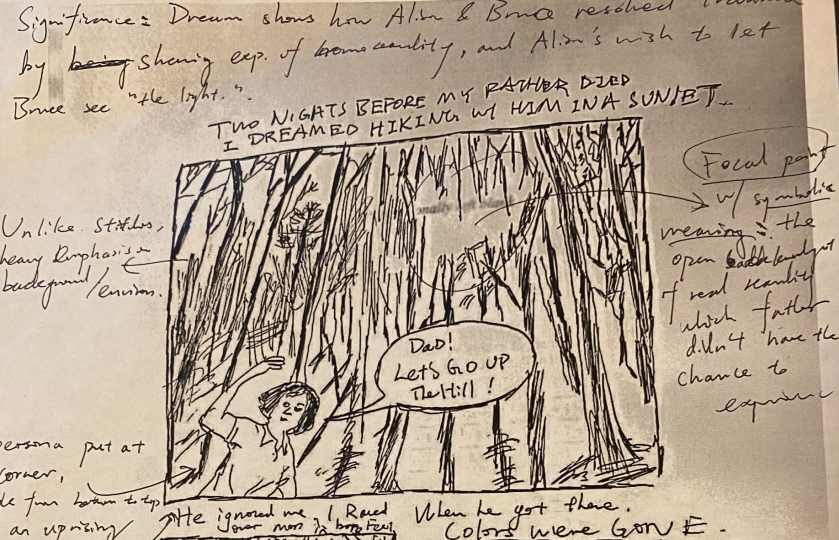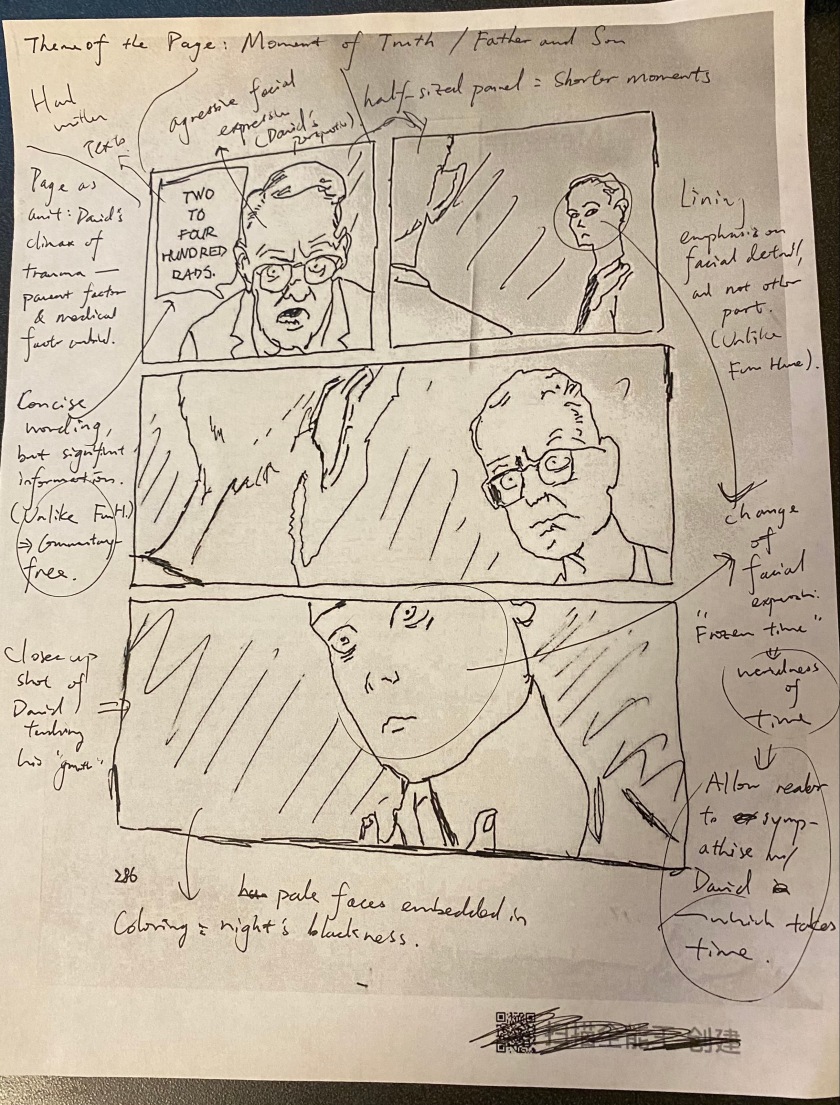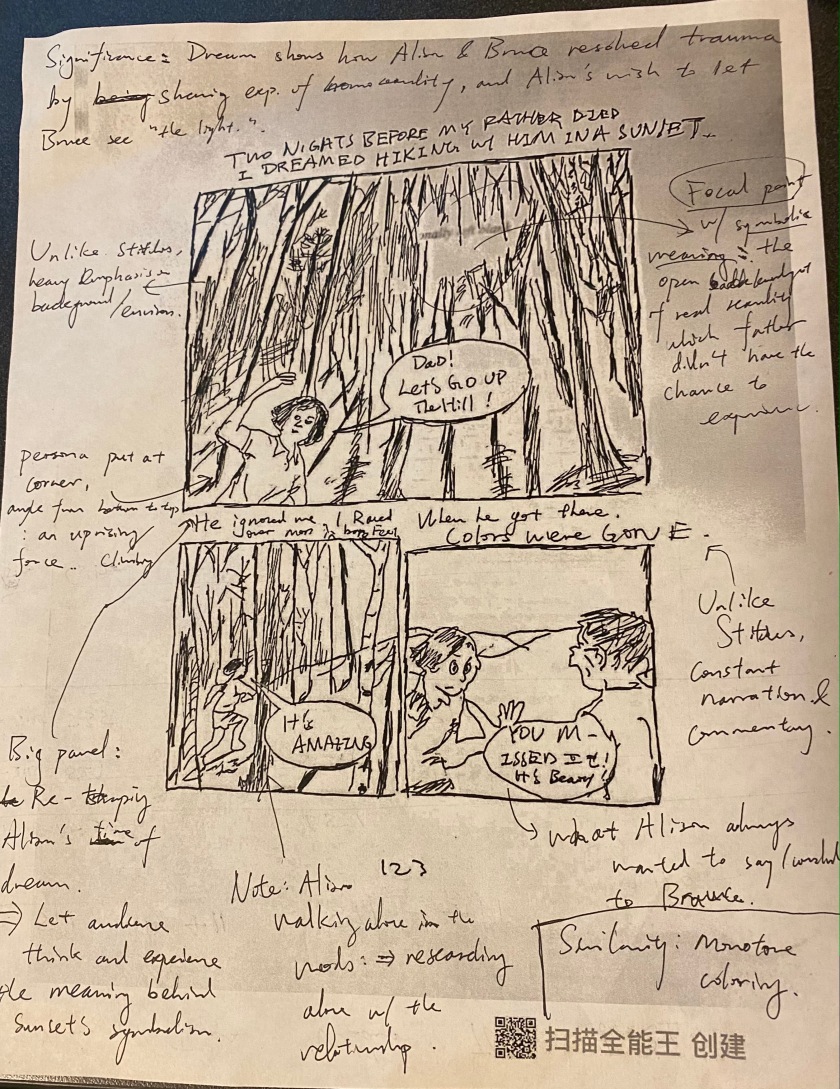Final Reflection (In Progress)
Over the course of the semester, I accomplished several major projects revolving around the theme of comics – the Halfa Kucha, creative Sunday Sketches, literacy narratives, and tracing pages. On the journey of completing the plethora of assignments, I practiced my digital citizenship by attempting to create and publicize work via new technologies, became a more mature writer, critical thinker, and confident presenter by rethinking & redrafting arguments on analysis of graphic novels as well as my own story, and above all, appreciated the power of visual thinking.
In my opinion, Halfa Kucha is the most challenging assignment integrating multiple learning outcomes. My Halfa Kucha presentation presented an analysis of Stitches alongside Gender Queer under Judith Hermann’s theoretical framework of stages of trauma recovery. My proudest achievement in this assignment is to incorporate the class spirit of “draw to win” by trying new technologies – unlike going straight to Microsoft Powerpoint, I intentionally stepped out of my comfort zone and familiarized myself with slides.com, which turned out to be more user-friendly than PPT; I drew out the symbolized abstraction of certain essential characteristics of selected pages to make a visual argument in this multi-medium rhetorical situation. Hence, I met the learning outcome of digital citizenship and visual thinking – “Demonstrate visual thinking strategies to analyze and interpret visual information and to experiment, assemble, and arrange visual and written documents of their own.” The most challenging part, on the other hand, is certainly the time limit of 20 seconds per slide. Unlike finishing a written assignment, I practiced over and over to make sure I could present material fluently in front of the class; the entire process involved text, images, live speech, and synchronous digital presentation, which achieved my learning outcome “rhetorical composition” – “to compose texts in multiple genres using multiple modes”.
However, the “draw-to-win” success wasn’t built in one day, rather it was a consequence of continuous practice in weekly Sunday Sketches assignments – my favorite chill part of all assignments. From hand-drawn sketches to music playlists, SK series presented my personal ideas through music, words, photograph, and drawing – again a great challenge for a person who hadn’t been drawing for several years. Take “Mr. Forest II” as an example, I blend in personal symbols in the framework of Forest Gump’s poster, conveying my wish for positivity and productivity. Also, one of the early works “Zero and Snake” visually demonstrated Hilbert’s Nullstellensatz, a theorem from another math course that has a highly geometric essence. By applying visual thinking skills to the abstract maths course, I deepened my understanding of the theorem itself and was able to convey the intuitive ideas even to outsiders, despite its complicated background in algebraic geometry. Thus the SK series, by applying multi-media for creative expression and digitalized distribution, again achieves learning outcomes “visual thinking”, “rhetorical composition” and “digital citizenship”.

